Cattle and war
Our acquaintance with the party leadership of the evacuated population during the years of the Great Patriotic War helped us to imagine the truly titanic efforts that the Communist Party of the USSR had to make in order to relocate people to the eastern regions who could be in the occupation zone. And not just to relocate, but to adjust their life, provision with accommodation and food, to restore the factories and factories exported to the “pure field” (and there was even such!) And make them work. However, besides people, evacuations were also subject to ... animals - cows, horses, pigs, because cattle is the same wealth of the country as DIP machines, and even more, because if there is no food, there will be no one to serve the machines .
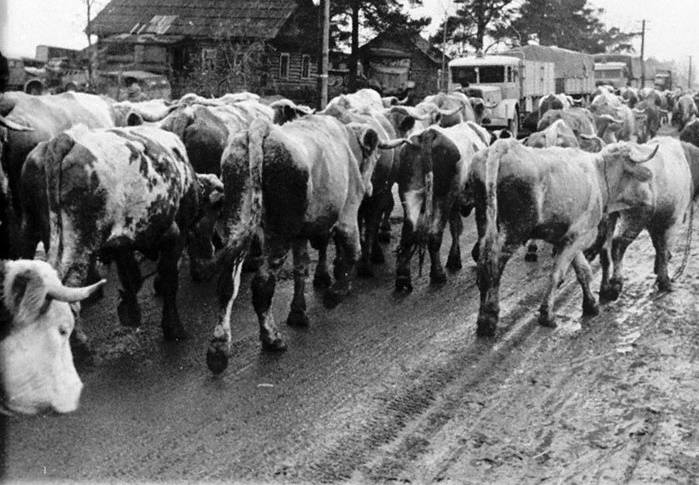
Animals go from war!
In addition, the evacuation was carried out by absolutely old-fashioned methods. There were not enough trains to transport people. What is there to evacuate by rail. The cattle were driven by herds, driven under the bombs of German aircraft, the pilots of which were often amused by the fact that they were reduced to a strafing flight with the sirens turned on. The cows scattered in horror, fell into the pits and maimed, many lost their milk from fright. Especially in the confusion and confusion killed calves.
On the hauls of the herd it was necessary to water and feed, organize their protection, collect the beaten off cattle. There were few people to accompany them - men were needed in the army, weapons it was not enough, in the end, the losses among the cattle being distilled were simply enormous. But even when the cattle reached the safe areas, his ordeal continued. In advance of the feed for such a number of animals arrived was not stored. Nobody supposed that they would have to fight on their own land, and not on the territory of the enemy, and where was this excess feed to be taken? Urgently mow?
A characteristic feature was the increased mortality of livestock, tormented by long-distance hauls, weakened, animals became easily vulnerable to diseases. And although it should be emphasized that story does not know examples of such a large-scale evacuation of livestock from one region of the country to another, the price of this evacuation turned out to be very expensive!
It can be said that transferring all the cattle in the areas of occupation to the eastern regions was simply higher than human strength, with the result that horses still fell into the hands of the Germans - 7 million, cattle - 17 million heads, pigs - 20 million , and also 27 million goats and sheep and 110 million heads of various poultry, some of the animals went under the knife, and some were immediately taken to Germany.
The consequences of the occupation for cattle breeding of the USSR became very difficult. Thus, the number of cattle relative to the level before the war fell by 60%, sheep and goats decreased by 70%, pigs - by 90%, horses - by 77%. In Ukraine, the number of cattle, respectively, decreased by 44%, sheep and goats - by 74%, pigs decreased by 89%, and horses by 70%. The losses in Belarus were also very noticeable.
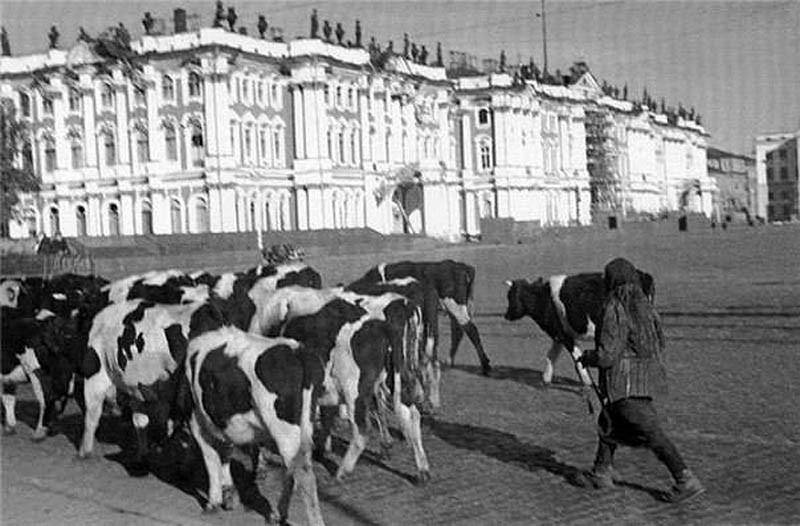
Cows on Senate Square
At the same time, not only the quantity but also the quality of livestock was dealt a blow, as the fascists drove a large number of breeding cattle to Germany, and the breeding cattle that did not manage to steal was simply destroyed during the retreat. True, many cattle still managed to evacuate, and a large number of horses on the way to the East transferred the army. Part of the evacuated livestock in the process of moving surrendered to the meat, so that at least some benefit even cattle that did not reach safe areas brought. Many cattle were placed in the Stavropol Territory, in the Dagestan Autonomous Soviet Socialist Republic, in the Stalingrad region and also in the North Caucasus. Incredibly, individual herds of cattle from collective and state farms of Ukraine were able to get to the East Kazakhstan region on their own.
However, in the summer of 1942, a second cattle evacuation began. I had to drive cattle from the front-line areas of the North Caucasus, the Middle and Lower Don, the Stalingrad and Astrakhan regions. Moreover, this evacuation had to be carried out in two stages: at first the cattle were transported across the Volga, and due to the actions of the enemy aviation while many people and animals died; and then herds of cattle had to be driven on. Losses of livestock here were less, since at least no one bombed the herds and did not fire from the air, but still part of the exhausted animals had to be slaughtered for meat. However, the troops of the nearest fronts and the strategic strategic reserves of the Headquarters of the Supreme High Command were supplied with this meat.
Germans are loading trophy cattle
The party and the government showed great concern for the preservation of the young. 11 March 1942, the SNK of the USSR and the Central Committee of the CPSU (b), adopted a special resolution “On measures to preserve young stock and increase livestock numbers on collective and state farms”. In 1942, the collective farmers purchased 5,4 million heads of personal livestock, which made it possible to raise the number of public livestock of cattle, sheep and goats in collective farms in the rear by about 10%.
But by 1 in January 1943 the number of cattle in the country again decreased compared to 1 in January 1941 by 48%, including cows - decreased by 50%; sheep and goats on 33%, pigs - on 78%. The reason for the reduction of the feed base, because the stock of feed was simply no one to create. Livestock productivity also fell sharply. So, in 1942, for one fodder cow on collective farms, we received just 764 liters of milk versus 949 liters in 1940.
Drought and crop failure 1943 g. Even more negative impact on livestock. There was a shortage of not only banal hay, but also such forage waste as oilcake, bran, silo. In 1943, the livestock mortality was 2 — 3 times higher than in the prewar years. In only seven months 1943 from hunger and exhaustion only in the Altai region fell 52 000 horses, 120 160 cattle heads, 449 300 sheep and goats, 44 860 pigs - in fact a huge herd, which our country has lost. And this is in Altai, where there are many beautiful pastures.
It is clear that after this the harvesting of meat products has been sensitively reduced. Thus, in 1942, livestock and poultry (in terms of slaughter weight) 780 thousand tons were harvested, or just 60% of the 1940 level, milk and dairy products - 2,9 million tons, or 45% of the pre-war level. Due to the lack of pork, the collective farms had to take cattle and sheep for meat, as well as take cattle in exchange for bread, seeds and other products.
In response, the party and the government took action. It was allowed to reduce the slaughter of livestock. In 1943, a statement was made to return cattle that had been evacuated to the rear to the liberated western regions of the country. The case is, of course, necessary and good, but it was carried out according to our traditional principle “they wanted the best, but it turned out as always!” The fact is that it was necessary to return the cattle by payroll, that is, how much it went through evacuation. But in the rear areas only a small part of the evacuated cattle survived, the mass of cattle fell from starvation, a lot of cattle surrendered to meat. Therefore, the collective and state farms had to give up their own cattle, which for a short time were simply withdrawn from them and transferred to the areas affected by Hitler’s occupation. What it turned out for donor areas you can imagine. Particularly affected areas such as Kuybyshev, Ulyanovsk, Penza, Astrakhan. In fact, their livestock was hit, comparable to the German occupation.
And, of course, in the country socialist competition was announced for who will return more cattle to the West. As a result, on 1 in January 1944, the collective farms of the liberated areas were returned 630,8 thousand livestock instead of the planned 591,5 thousand. In addition, the state purchased and sold the collective farms of the liberated areas 250,6 thousand of various livestock. In the areas affected by the occupation, 886,8 thousand calves and lambs were received to recruit livestock farms instead of those provided by 604 thousand, more than 516 thousand hens, ducks, geese, ie almost 17 thousand heads of poultry more than was set by the government.
Thus, the Azerbaijani collective farmers transferred about 4,5 thousand heads of cattle to the Stalingrad region. Georgian 26 sent thousands of livestock to Ukraine. 35 thousand livestock returned to the North Caucasus. In total, 1944 sent 1 720 thousand heads of cattle, 253 907 pigs, sheep and goats to 3 in January, which contributed to the revival of collective and state farm cattle breeding in the liberated areas and undermined it in areas not affected by the war. In total, about 1 million heads of cattle were transferred to the liberated areas, including more than XNUMX million cattle.
Successes on the front contributed to the success and in the rear. Already with 1944, yields began to increase gradually, the wool was grown, the loss of livestock decreased, and the number of pigs increased. The indicators of 1945 have become even more noticeable.
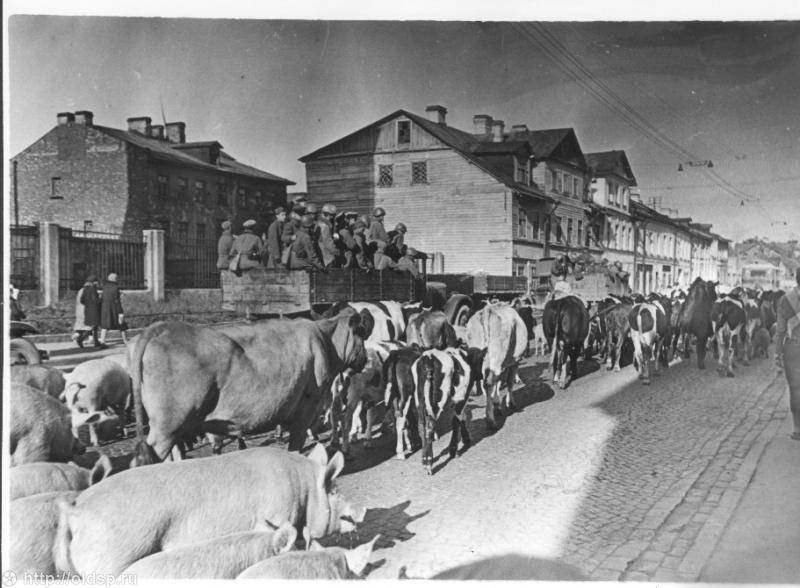
Theft of cattle from the Leningrad region
It should be emphasized that as a result of increased attention to small-scale livestock farming, such areas as poultry farming and rabbit breeding have emerged as an independent branch of agricultural production and have significantly improved the country's nutritional structure.
In the rear areas, pig and horse breeding suffered the most. The number of horses in the country by 1945 was reduced by 10,7 million heads, or 49%, and by 9 million heads it decreased in areas of the Nazi occupation.
During the war years, mandatory deliveries of livestock products to the state were strictly controlled and naturally increased. In general, during the war years, due to increased slaughter, it received on average 17,8% more cattle meat per year than on average before the war, and 2,2 times more sheep and goat meat. And here's an interesting question, with a mass case, lack of food and a lack of feed due to which all this was achieved? After all, even in the most difficult year for agriculture 1943, the collective and state farms of the country handed over to the state almost as much meat (686,3 ths. Tons) as in 1940 (691,5 thsd tons) for compulsory deliveries. And if in the early years of the war, meat deliveries on a higher scale could have been achieved by slaughtering the evacuated cattle, and in 1944 — 1945. there was no such source, and then the question arises, where did they get this most extra livestock, from whom? The answer can be only one - among collective farmers who raised their own livestock with greater efficiency than the collective farm herd, and put in such circumstances that they simply had to hand it over to the state.
Theft of cattle from the Leningrad region
And then in 1943 — 1945. in the western territories of the USSR liberated from the enemy, the restoration of the 3093 MTS was started, where, again, from the central regions of the country, the Volga region and Siberia, by the end of 1945 more than 26 thousand tractors, 40 thousand other agricultural machines and more 3 million cattle were received. The result is known to us: if we look at the map of the economic development of the USSR, it is easy to see that its most developed and economically successful republics, except for the republics of the Caucasus, were Ukraine (including Western Ukraine), Moldova, Belarus and the Baltic states, being!
P.S. By the way, about the evacuation of livestock during the Great Patriotic War, you could make an excellent movie with a fascinating plot.
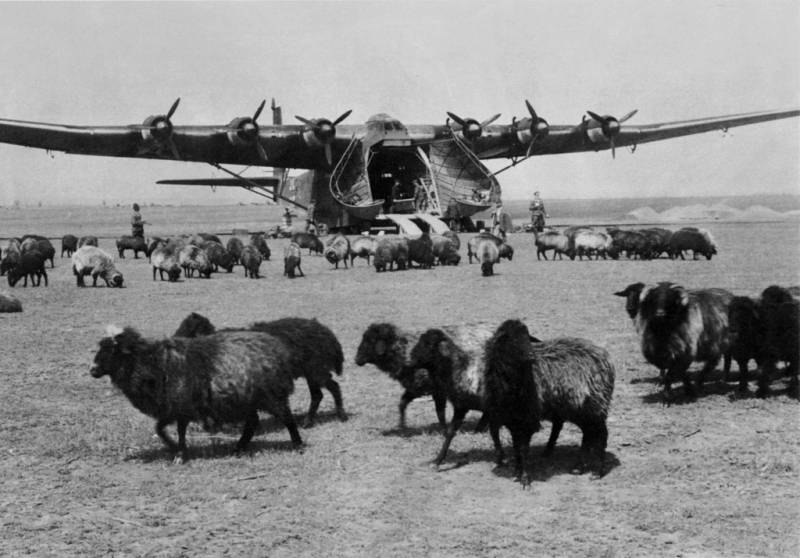
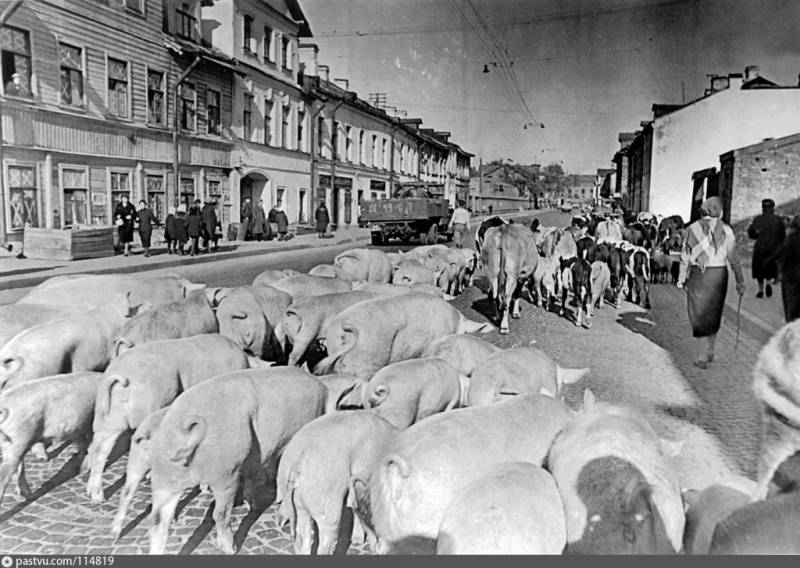
Information